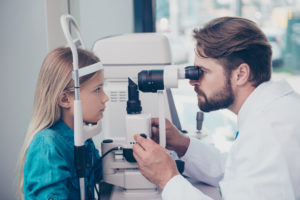October 2, 2023
By Nina Tahhan, PhD, MPH, BOptom

This insightful review of myopia control efficacy by Professor Noel Brennan and his colleagues1 challenges us in our thinking about how we should evaluate, report, and compare data from the ever-increasing number of myopia control studies.
One area discussed that justifiably causes us all to pause is the problem of comparability of efficacy data between studies. Even when studies are well-designed, randomized, and controlled, many factors still make comparability difficult. For example, control group characteristics such as age, genetic and environmental background, and level of refractive error can differ, impacting myopia progression rate and, hence, treatment effects reported in the controls. Hence, Brennan et al. argue against using “percentage” as a means for treatment comparisons outside of a single study where efficacy is reported relative to the control group.
Variation in study duration also complicates comparability, with one issue being reduced efficacy over time. Very few studies have actually conducted head-to-head comparisons within the same study. So far, these are showing similar efficacy between different contact lens types (orthokeratology, multifocal, and EDOF),2 as did the analysis conducted by Brennan et al. comparing published data using their recommended methodology coined CARE — Cumulative Absolute Reduction in Axial Elongation. This area deserves further attention.
Hence, the International Myopia Institute (IMI) is currently bringing together experts from around the world to reach a broader consensus on this hotly debated area, so stay tuned for the next series of IMI white papers.
Abstract
Efficacy in Myopia Control
Noel A. Brennan , Youssef M. Toubouti , Xu Cheng , Mark A. Bullimore
There is rapidly expanding interest in interventions to slow myopia progression in children and teenagers, with the intent of reducing the risk of myopia-associated complications later in life. Despite many publications dedicated to the topic, little attention has been devoted to understanding “efficacy” in myopia control and its application. Treatment effect has been expressed in multiple ways, making comparison between therapies and prognosis for an individual patient difficult. Available efficacy data are generally limited to two to three years, making long-term treatment effect uncertain. From an evidence-based perspective, efficacy projection should be conservative and not extend beyond that which has been empirically established.
Using this principle, review of the literature, data from our own clinical studies, assessment of demonstrated myopia control treatments and allowance for the limitations and context of available data, we arrive at the following important interpretations: (i) axial elongation is the preferred endpoint for assessing myopic progression; (ii) there is insufficient evidence to suggest that faster progressors, or younger myopes, derive greater benefit from treatment; (iii) the initial rate of reduction of axial elongation by myopia control treatments is not sustained; (iv) consequently, using percentage reduction in progression as an index to describe treatment effect can be very misleading and (v) cumulative absolute reduction in axial elongation (CARE) emerges as a preferred efficacy metric; (vi) maximum CARE that has been measured for existing myopia control treatments is 0.44 mm (which equates to about 1 D); (vii) there is no apparent superior method of treatment, although commonly prescribed therapies such as 0.01% atropine and progressive addition spectacles lenses have not consistently provided clinically important effects; (viii) while different treatments have shown divergent efficacy in the first year, they have shown only small differences after this; (ix) rebound should be assumed until proven otherwise; (x) an illusion of inflated efficacy is created by measurement error in refraction, sample bias in only treating “measured” fast progressors and regression to the mean; (xi) decision to treat should be based on age of onset (or refraction at a given age), not past progression; (xii) the decreased risk of complications later in life provided by even modest reductions in progression suggest treatment is advised for all young myopes and, because of limitations of available interventions, should be aggressive.
Brennan, N. A., Toubouti, Y. M., Cheng, X., & Bullimore, M. A. (2021). Efficacy in myopia control. Progress in retinal and eye research, 83, 100923.
DOI: https://doi.org/10.1016/j.preteyeres.2020.100923
 |
Dr. Nina Tahhan is the Director of Clinical Research at the Brien Holden Vision Institute, Project Director for the International Myopia Institute, and a member of the Vision Loss Expert Group. Dr. Tahhan has over 20 years of experience in the eye health sector in various areas, including clinical eye care to underserved communities, delivery of eye care education to practitioners, optometry students, community health workers, and academics and academic research. Her research areas have included orthokeratology, myopia control, soft contact lens performance and impact on ocular physiology, quality of life, ophthalmic epidemiology, and health economics. |
References
- Brennan NA, Toubouti YM, Cheng X, et al. Efficacy in myopia control. Prog Retin Eye Res 2021;83:100923. doi: 10.1016/j.preteyeres.2020.100923 [published Online First: 20201127]
- Sankaridurg P, Berntsen DA, Bullimore MA, et al. IMI 2023 Digest. Invest Ophthalmol Vis Sci 2023;64(6):7. doi: 10.1167/iovs.64.6.7













